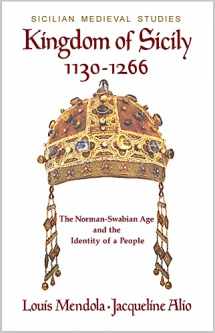
Kingdom of Sicily 1130-1266: The Norman-Swabian Age and the Identity of a People (Sicilian Medieval Studies)
Book details
Summary
Description
A defining reference work whose engaging narrative brings southern Italy’s Middle Ages to life.
This is the first major history written in English about the Kingdom of Sicily under its Hauteville and Hohenstaufen dynasties in the High Middle Ages. Encompassing the island of Sicily and most of the Italian peninsula south of Rome, this multicultural society of Muslims, Jews, and Christians East and West, was a nexus where the civilizations of feudal Europe, Byzantine Asia, and Fatimid Africa flourished in synergy into the 13th century.
Unlike most histories of the kingdom, this one brings the reader much information about social culture, such as the language and cuisine that emerged from this eclectic era to influence southern Italy and its people in ways still seen today. There are revealing chapters on the language popularized before Italian, and the culinary milieu that gave us spaghetti and lasagne.
Women are never overlooked. Among them are Margaret of Navarre, regent for five years, Trota of Salerno, author of a medical treatise, Nina of Messina, the first woman known to compose poetry in an Italian tongue, and the unnamed Bint Muhammad ibn Abbad, who led a rebellion alongside her father.
This long-awaited book presents an essential chronological history supplemented by concise sections on topics such as phylogeography, coinage, and heraldry, with dozens of maps and genealogical tables. It has hundreds of endnotes, a lengthy bibliography, a timeline, and appendices on regalia, the kingdom's first legal code, the coronation rite, the longest poem of the Sicilian School, and historiography. A long introduction explores sources, ethnic identity, historical views, and research methods, candidly dispelling a few myths.
This hefty volume has something for everybody. It's a fine addition to library collections and a useful reference for students, while its lively narrative makes it an engaging read for anybody curious about this time and place. Those having roots in southern Italy will discover the origins of their ancestral culture, the ethnogenesis that led to what exists today.
This long glimpse of a singular society was worth the wait.


We would LOVE it if you could help us and other readers by reviewing the book
Book review



